Alfredo Brillembourg, Urban-Think Tank
ArchIdea 65 Interview
May 2022
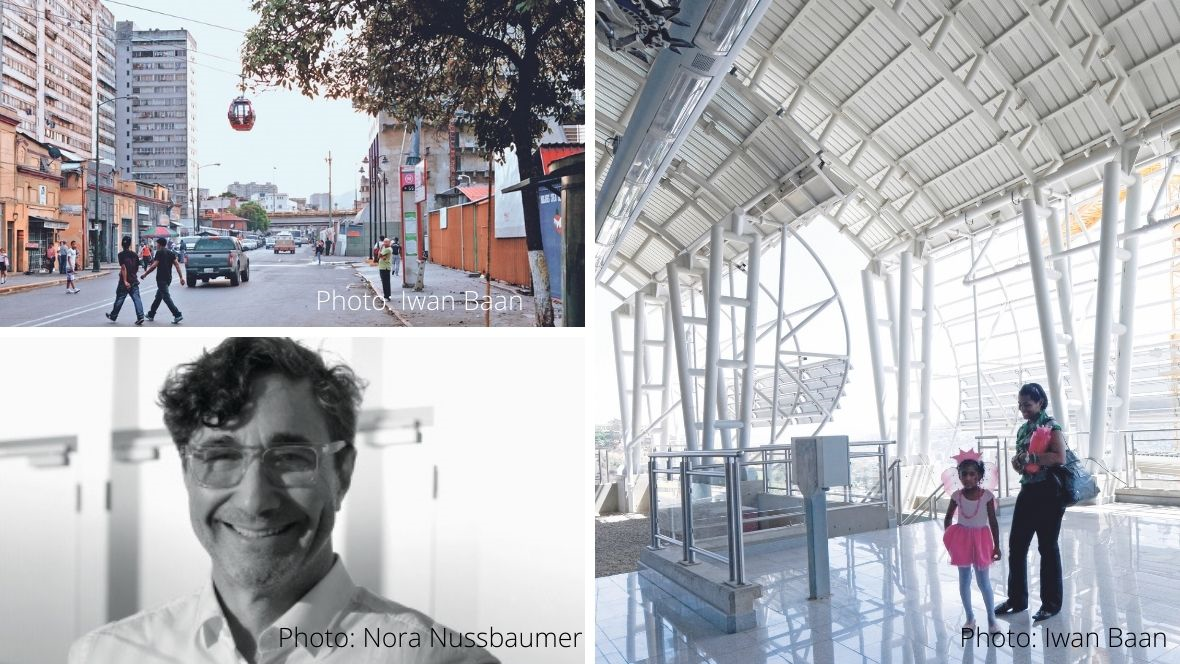
According to Alfredo Brillembourg, architects should contribute to breaking down the divisions between rich and poor, between the formal city and the informal city. Their aim should be to generate social impact. “If we don’t manage to achieve that in cities, a social revolution will erupt everywhere because we live in a world of violent challenges to the status quo, from Chile to Iraq to Hong Kong, from Catalonia to Extinction Rebellion.”
Rising above the dense favelas of Caracas, four “vertical gyms” – multi-storey sport centres accommodating a wide range of sporting activities – have been built over the years. They do exactly what
they were meant to do: to bring people together in a safe environment, and to give them an opportunity to exercise and stay healthy.
These sports centres illustrate perfectly what the work, or method, of the architecture firm Urban– Think Tank is about: urban acupuncture, as they like to call it. For twenty years, the architect Alfredo Brillembourg, who founded the firm together with Hubert Klumpner, travelled around the world intensely collaborating with local residents, mostly for projects that supported communities of poor people and improved the social fabric. Central to Urban–Think Tank is an approach to architecture that differs radically from that of most architecture offices.
At the beginning of the recently published monograph of Urban–Think Tank, The Architect and the City, a simple but urgent question is raised by Pritzker Architecture Prize winner Balkrishna Doshi. “What is the role of the architect? Are we going to be a service provider working for a client, or are we going to be useful to society at large?”
While in Geneva, Brillembourg replied to Doshi's question. He explained that the role of the architect has changed because the main issues of the city have also changed.
“Architects have to respond to the issues of their time, issues that are relevant at this moment in history – to use the encompassing terms urbanization, informalization and globalization. It is our duty to critically examine how we should deal with those issues. China, for instance, raised 400 million people out of poverty by demolishing the dilapidated hutongs where they lived and putting them in high rise apartment buildings.
But has it really benefited them? The apartments have sanitation and toilets, but now tenants live on the fortieth floor, cut off from the community and lacking the proper maintenance for such high rise
buildings. So we should ask ourselves whether they are really better off in vertical cities like those?”
You write about the informal city, a city that is not planned but has grown more or less organically. They are looked down on as hutongs, slums, favelas and shanty towns. But in your opinion the informal city matters as much as what you call the formal city. Can you explain why?
“Less than one percent of world’s buildings is designed by trained architects. The other ninetynine percent, especially in the global South, is built by the people themselves – casual or self-trained architects, builders, developers and engineers. The informal city is dominant, whether you like it or not, so it doesn’t make sense to ignore it as a phenomenon that preferably should not exist. The fixation of architects on what we might call the formal city is a perpetuation of the gap between them. What we need to do is to think of ONE city, the formal and the informal city working together.”
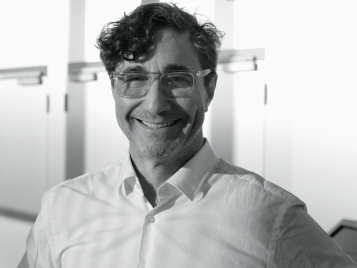
But isn’t the formal city the territory of the architect? That is where the money is, where the commissions are to be won; not in the informal city that grew by itself?
“Since the Renaissance architects have always been positioned at the centre of the official culture, at the centre of power. Their work is about controlling the city, about mastering it. That makes the architects effectively complicit with the problem of inequity, one of the world’s most serious problems these days.
Obviously, Architecture is not going to solve anything. Why do we need a 300 million dollar opera house in Amman, Jordan, like the one Zaha Hadid designed? What is the point? Jordan has no water. You could build a desalination plant with the same money! When I started to dissect architecture, I noticed that the way the profession was taught in elite schools was wrong. At Columbia University which prides itself as being global, there was a whole department for designing parametric façades, i.e. designing with algorithms. But in large parts of the world that knowledge is utterly useless.
Going back to Venezuela, I couldn’t import those panels. I didn’t have the kind of digital software technology or the steel contractors to model fantastical shapes in a structurally sound and cost-effective manner such as Frank Gehry uses. I couldn’t practise any of that specialized knowledge. So when in Caracas I needed to re-educate myself, and in that process of re-education, a left wing revolution started all of a sudden because of the extreme poverty. That was reality; that was the context that I was working in. I wanted to figure out where did we architects go wrong, and I discovered little clues that led me to the periphery of architecture and to intersections with other disciplines like sociology, science, art, cinema.”
In the sixties and seventies, architecture was much more connected to sociology and psychology. In the eighties, however architects rediscovered, as it seemed with huge relief, their own
profession as an autonomous art. Are you saying that they were wrong and that architects should connect themselves once again to the spirit of the sixties?
“All good architecture starts with a question. We need to know where we want to go, we need to think about a realizable utopia. I embrace a realistic vision of a flexible, accommodating, creative
society and translate it into an architecture that has quantifiably made the world into a better social place. Architectural visions are a way of storytelling that helps us to understand what to do and in which direction to move on. In that respect, the architect has to be like a politician. He has to have a vision of what the future should look like.
“Unfortunately the epicentres of the developed countries are no longer producing relevant ideas. Most architects are stuck to a status quo rather than rethinking the profession and introducing a
broader notion of change in the face of ever more powerful development companies. What we need is to bring socially conscious design forward to make massive changes. The challenge for architecture lies now in hybridity. We need to understand hybridization in society as a way to alter the manner of speaking about identity, culture, difference, inequality and multiculturalism.
That is the lesson I learned from the cultural diversity of Latin America, from this mixture of Indians, Europeans, Africans and Arabs. It could be a lesson for all of the world: to break down divisions between rich and poor, formal and informal, and to create a society that is more inclusive. If we don’t manage to achieve that, conflict will erupt everywhere. My designs mix the programme vertically and emphasize the assimilation and appropriation of popular local cultures, like the vertical gym or the Baranquilla Art School.
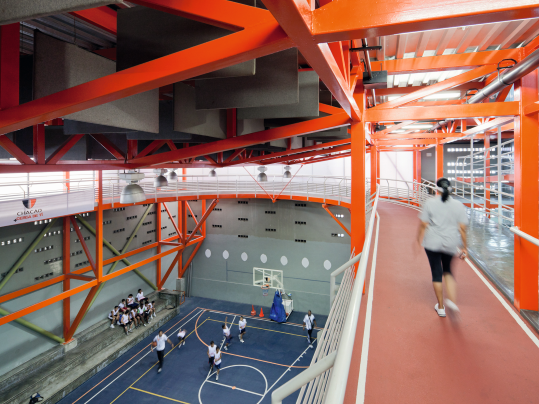
Vertical Gym, Caracas, Venezuela. Photo: Iwan Baan

Empower Shack, Capetown. Photo: Jan Raw
Isn’t it the task of politicians to deal with slums and to improve the living circumstances of the people living there? What can architects do for them?
“An architect is not someone who builds walls, a floor and a roof – someone who can draw the plans and does that in the best way possible, in order to create a desirable object. In my view the architect has to be engaged with the city from the outset, before he is given the site. He has an arsenal of tools at hand, so that when he is asked to undertake the project he is prepared with a series of propositions that he has been accumulating through years of research. There is no good architect today without research at the core of his practice. To work in the city, an architect needs a register of data that helps him to understand where and how to intervene. If the city is the greatest construct man can make, an architect is particularly well poised to not only build it but to be at the centre of this moderation process. Therefore I believe that the architect is essentially an urbanist who can help formulate a sense of ownership and symbolic representation through his designs".
But it could also make the role of the architect vague or diffuse when he no longer is the one who is designing a beautiful object.
“Again, by creating only built objects as icons, the architect is complicit in the problem of a real-estate market that exacerbates social inequality. The commodification of our cities, unchecked by a profession but profiting from it, is destroying their role as places of public life.
I believe that the architect needs to understand his role as a communicator between two poles: the creator of the work, and
the person or people who experience the work. If he is conscious of this fact, the architect has another role too: to be the intellectual spokesman for making cities more accessible to all.”
"I have always tried to facilitate a sense of community through a process of design that constitutes a source of shared expectations about values and norms for the neighbourhood.”
Does that also imply that you often work without
a brief?
“The question is what the brief is. For the community of San Agustin, a slum at the entrance to Caracas that runs down from the hill to a highway, the brief of the government was to give road access to all the houses. The people who live there questioned this brief because a lot of houses would be demolished to make way for road construction. We came to know about their grievances accidentally when a friend took us to a social centre that was erected bit by bit by locals on an abandoned piece of land. We hurried to our office and sketched a cable car system to present it to the government as an alternative. After some political complications, president Chavez accepted it as his most significant project. Ten years after our first sketch, he opened the Metro Cable design for the hill. The capacity of the system allows for moving 1,200 people per hour between five stations.”
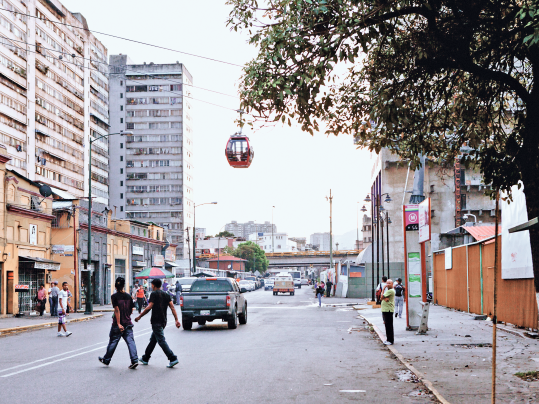
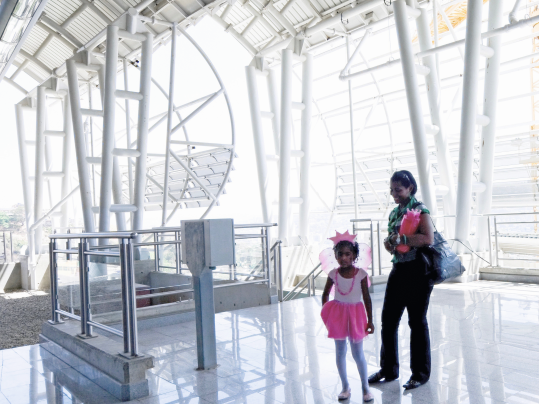
Metrocable, Carcaras, Venezuela
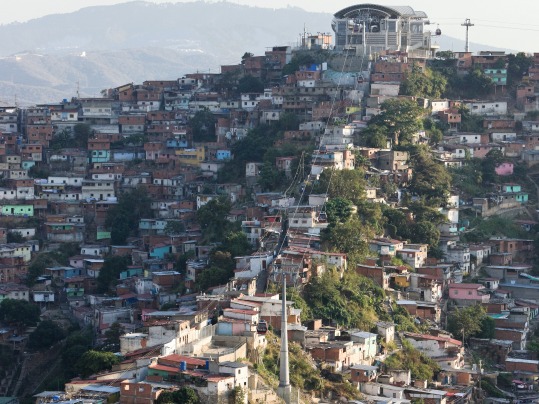
Photos: Iwan Baan
To realize an intervention like that, you would have to be rooted in the local community, or at least to have informal connections. Could you ever have developed your practice without Caracas?
“Today architecture is global, and you don’t have to come from the city where you build. In fact an outside view is often necessary as catalyst. But we understood Caracas well because we had lived there, and we were familiar with the city’s politics and economics and all the other factors that would make the project work. We had years of research in our heads but it was not at all easy to get things realized in Caracas. That is even more true for our work in other cities, outside Venezuela.
Obviously, culture is not composed of elements that can be
disassembled and reassembled: culture has to be lived. Cultures, like architectural thinking, mature and sediment slowly as they become fused into the context.
For instance, when we started a project in Khayelitsha, a township close to Cape Town in South Africa, I staged a play together with the local community in order to win their confidence. I spent a year doing this theatrical production. By the time we laid the first stone of an ‘Empowered Shack’, five years had passed. Architecture that has a social impact takes time, and we have to figure out how to pay for this research process.”
Are you often confronted with distrust when you enter a community as an outsider?
“It helps when you come from South America. You are already a product of a hybrid culture and everybody recognizes that you are not totally European or Westernized However, there is always going to be distrust if the architect tries to bypass local knowledge and not listen to the many different voices that make up a community. The behaviour of the architect is just as important as the ideas that we put into drawings. Communities strongly distrust architects because they tend not to provide convincing evidence as to their limitations and failures.
It raises the question of whether cities should have a role for a community architect, or at least an obligatory budget for community engagement by a third party. And there are good reasons for that, as communities know how to build themselves perfectly. Since the 1970s, there has been a bank of knowledge on Latin American ideas about squatter settlements, and it has been brought to the attention of urban scholars around the world. We have expanded on this notion of the planning tradition, and on the notion of self-help and systematically exploring its implications. Barrio-dwellers in Caracas, São Paulo or Lima know how to build, but what they cannot do is to design the public infrastructure to fit their idea of the neighbourhood – greenways, water treatment, parks, public spaces, communal centres etc. That is why I say that urbandesign is nowadays the core of architecture.”
Quite a lot of your projects were cancelled due to the volatility of local politics and local power structures. What lesson did you draw from that?
“So-called ‘global architecture’ has a problem exactly because of this engagement. Buildings designed for a global impact, which hope to attract interest from other countries and regions, should not disregard local traditions. Moreover, you need to learn from the globe, because if you don’t, you aren’t learning at all or advancing the language of architecture. Every country has its development agencies, organizations that are supposedly overseeing the country’s outreach and development, but you also need strong NGOs on the ground to establish local connections and work intensely with communities. So we decided to establish a practice of architecture that links with these multilateral institutions and foundations that do development work, in order to help our projects land in a softer way and to bring design and infrastructure together.”
Architects usually design buildings, and a few of them also write books. Besides designing buildings and writing a lot of books, you also make films, you write plays, you develop apps and you use a lot of different media. Why?
“In architecture, it can be difficult to determine where research ends and practice begins. Architectural research tends to merge into practice. I see design and research as intertwined—my research uses film, theatre and interactive design tools. My design process helps me better understand the site and other peculiarities of the project.
To elaborate on that, I would say that the future architect is a social entrepreneur who tells a story with all kinds of media and who creates a social impact. That’s the bottom line. If your building does not have social impact, don’t build it. People are the infrastructure I work with.”
Is your motive to support, enhance or even create a local community?
“For sure, you create coherence through a story. You bring people together, and you conciliate them by using all the technical and narrative tools you have learned in the architecture school. A diagram, a drawing, a rendering, a movie: easily understood visual communication is an effective way to bring people together and help them organize themselves. We need to have more self-governance. The government of a country should
regulate the finances, health services, education, mobility and transportation. The rest should be handed over to the people. We should break down cities into units of design, around blocks of neighbourhoods that govern themselves.”
Photo: Iwan Baan
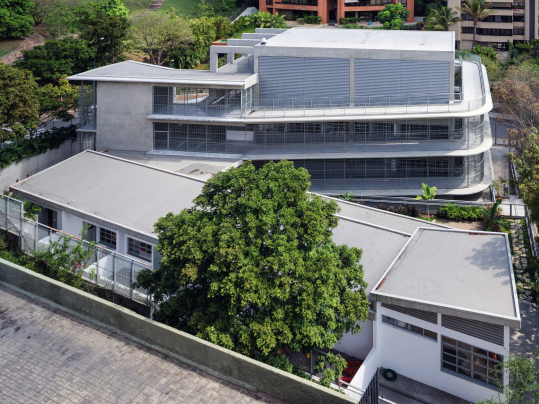
Want to read more interviews like this? ArchIdea is our bi-annual magazine that features well known and upcoming architects from all over the world alongside some of the latest projects in which our floor covering has been installed.
To start receiving your FREE copy, sign up here